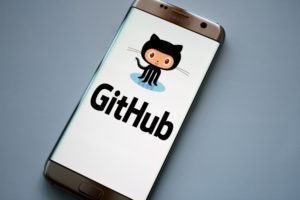
Predictions for Application Development in 2019

(everything possible/Shutterstock)
Application development has become a cloud-focused initiative in many enterprises. Consequently, the languages, tools, and platforms needed to support today’s development initiatives are rapidly evolving.
Application development is also a discipline in which data science is assuming a greater role. To support the growing range of development projects with artificial intelligence (AI) at their core, enterprises are having to continually transform DevOps workflows to support continual building, training, and iteration of deep learning, machine learning, and other statistical models for deployment into production cloud environments.
As we look ahead to 2019, we expect to see the following dominant trends in enterprise application development:
- Open development ecosystems will be at the heart of every tool vendor’s go-to-market strategy: Practically every vendor—large and small, established and startup—has pinned its future on its participating in the open-source community. Some have taken that open commitment even further in 2018. In the year gone by, Microsoft took on a special status in the open-source world with its acquisition of GitHub, the foremost DevOps platform in the open-source ecosystem. In 2019, Microsoft will continue to abide by its express commitment to allow
GitHub to operate in vendor-agnostic fashion in support of any language, license, tool, platform, or cloud that developers wish to use. In addition, Microsoft is likely to open-source more of its software projects and to refrain from asserting IP claims on a wider range of its IP patents, consistent with its recent joining of the Open Invention Network. The vendor is likely to assume a more proactive role in the open-source community as an evangelist for the new era of post-proprietary software development.
- Serverless will dominate new cloud-native application development: Cloud application developers flocked to functional programming, also known as serverless, in a big way in 2018. This trend shows no signs of slowing down, as evidenced by the growing range of serverless tools, interfaces, projects, and other initiatives that have come to market this year. It’s also evident in the eagerness with which developers are adopting these offerings. In 2019, we’re likely to see the open-source Knative serverless project implemented by many vendors beyond its core developers Google, Pivotal, IBM, Red Hat and SAP, with Microsoft, AWS, and Oracle likely to come on board during the year. In addition, it’s very likely that Knative will be submitted to CNCF for development and governance under its growing cloud-native stack.
- Developers will build hybrid serverless and containerized cloud applications: Hybrid clouds are becoming common in many
 enterprise IT strategies. At the application level, more developers are building hybridized cloud applications that incorporate data, workloads, and other resources that span public and private clouds. In 2019, we’ll see more development tools that enable hybridization of heterogeneous containerization and serverless environments. Adoption of the emerging Knative project will accelerate the creation of hybridized serverless applications that run over federated Kubernetes multiclouds.
enterprise IT strategies. At the application level, more developers are building hybridized cloud applications that incorporate data, workloads, and other resources that span public and private clouds. In 2019, we’ll see more development tools that enable hybridization of heterogeneous containerization and serverless environments. Adoption of the emerging Knative project will accelerate the creation of hybridized serverless applications that run over federated Kubernetes multiclouds. - Transactional applications will shift toward the cloud’s edges: Conversational commerce, Alexa style, is the harbinger of the more pervasive edge-commerce future that awaits us all. In 2019, developers will increasingly build transactional applications that are designed to operate over and entirely distributed IoT, edge, mesh, and other cloud fabrics. To support these radically decentralized environments, more enterprises will use blockchains and smart contracts to provide immutable logs, enable edge-to-edge transactional integrity, and ensure full transparency and accountability. However, it will take still 2-3 years, at least, for all necessary technological, commercial, regulatory, and other standard practices to coalesce into a new edge-based transactional backplane for any-to-any e-commerce.
- Data-science workbenches will adopt standardized cloud-native DevOps: AI is the heart of modern applications. Developing AI applications for the cloud increasingly requires the building of containerized microservices that are orchestrated within and across Kubernetes clusters over DevOps workflows. In the past year, the AI community has developed an open-source project called Kubeflow that provides a framework-agnostic pipeline for making AI
microservices production-ready across multi-framework, multi-cloud computing environments. Early adopters of Kubeflow include Agile Stacks, Alibaba Cloud, Amazon Web Services, Google, H20.ai, IBM, NVIDIA, and Weaveworks. In 2019, we’ll see the project mature and be implemented more broadly in commercial AI DevOps toolchain solutions. In this way, more enterprise app-development teams will be able to align their DevOps processes across teams working on AI and other cloud-native development projects.
- Python, Kotlin, and Rust will become core languages for building new applications: Mobile application developers will continue to rely on JavaScript, Java, Objective-C, and PHP. In 2019, other languages will grow in importance in developer toolkits to address the requirements of many hot new applications. Most importantly, Python has become the go-to language for AI, Internet of Things (IoT), Web, mobile, and gaming apps, owing to the fact that it’s easy to learn and use on practically any platform. Kotlin’s superior flexibility may enable it to replace Java at some point in the standard Android developer’s repertoire, while Swift’s compact, clear syntax is building momentum among iOS developers. Rust’s support for memory-safe concurrency gives it a leg up on other languages for IoT, embedded, and other applications that require always-on 24×7 robustness.
- Client-side AI frameworks will transform Web application development: JavaScript frameworks such as React are the heart of rich application development for Web, mobile, and other client-side edge application platforms. In 2019, more developers will build edge applications in JavaScript frameworks that enable richly interactive browser-based experiences, platform-native performance parity, and AI-powered client-side intelligence. GPU-accelerated client-side AI will
 become the heart of edge applications, as adoption of such open-source frameworks as js,Brain.js, and TensorFire continues to grow.
become the heart of edge applications, as adoption of such open-source frameworks as js,Brain.js, and TensorFire continues to grow. - Advances in GPUs will stimulate innovation in immersive applications: Users are adopting augmented, mixed, and virtual reality applications in a wider range of industrial, business, scientific, and consumer uses. Gaming, in particular, has been a huge growth area for these immersive applications, owing in part to the availability of high-performance, low-cost GPUs on more client platforms. In 2019, we’ll see this trend accelerate as the new Nvidia Turing GPUs, with their lightning-fast real-time raytracing, come to market in support of next-generation immersive apps that combine photorealistic visuals with AI-driven contextual intelligence. Developers will build a new generation of GPU-aware smart camera applications that leverage the client-side AI frameworks, such as TensorFlow.js, to support fluidly continuous immersive visuals even in disconnected and intermittently connected usage scenarios.
- Robotic process automation will become a principal development platform for AI-driven apps: Robotic process automation has been one of chief growth sectors in the software market over the past year. As an enabler for developing automation apps that emulate how people carry out myriad tasks, RPA has become a principal use case for AI in the workplace. Though traditionally used in RPA to infer application logic from artifacts that are externally accessible, AI’s role has expanded to enable creation of intelligent bots for business process automation. In 2019, we’ll see a growing role for AI in RPA to enable development of bots that can be orchestrated as microservices across Kubernetes environments. Through the adoption of cloud-native interfaces, RPA vendors will be able to address more IoT, edge, and multicloud opportunities.
- AI-augmented programming tools will make developers more productive: Software developers have long used automated code generation toolsto lighten the load. Augmented programming refers to the next-generation of “no code,” “low code,” and other approaches for automating coding and other development tasks. In 2019, we expect to see more of these tools incorporate abstraction layers that allow
developers to write declarative business logic that is then translated by tools into procedural programming code. In addition, more augmented programming tools will incorporate AI to generate code, by means of machine learning algorithms that have been trained on human-developed codebases maintained in GitHub and other repositories. More of these AI-augmented programming tools will rely on embedded graph models and leverage reinforcement learning to compile declarative specifications into code modules that are automatically built, trained, and refined to achieve the intended programming outcomes.
- Conversational user interfaces will grow less chatty but more useful: Chatbots have been a growing focus for application developers over the past several years. They’ve entered the consumer IoT and mobility arenas through Amazon Alexa, Google Assistant, and similar voice-activated appliance initiatives, while also finding their way into bot-powered text chat features in more enterprise applications. In 2019, we’ll see developers tap into sophisticated AI-powered digital assistant platforms such as Google Duplex to enable chatbots to automate more tasks predictively, thereby becoming paradoxically less chatty but more productive.
- Digital wellness will become a key mobile-app usability criterion: Users’ growing dependency on devices is undeniable, and it’s beginning to impact how developers approach building mobile applications. Though no one seriously believes that the average user will rely on their devices any less in the future, there is a growing repertoire of mobile application features—such as predictive automation of routine tasks and context-adaptive suppression of distracting notifications–that can help users unglue their frantic eyeballs from their smartphones now and then. Google’s emphasis on “digital wellness” features in its new Android 9 Pie operating system signals that we’ve entered a new era in mobile application development. In 2019, mobile application developers will leverage the predictive, adaptive, contextual and other usability features in this and other mobile platforms to help users stay sane, focused, and productive amid the growing glut of mobile devices in their lives.
What am I overlooking? I would like to hear my readers’ predictions for any segment of the enterprise application development arena in the coming year.
About the author: James Kobielus is SiliconANGLE Wikibon‘s lead analyst for Data Science, Deep Learning, and Application Development.
Related Items:
The Smart Object Ecosystem Is The New AI Workbench
Blockchain Starting To Feel Its Way into the Artificial Intelligence Ecosystem
Developers Will Adopt Sophisticated AI Model Training Tools in 2018































